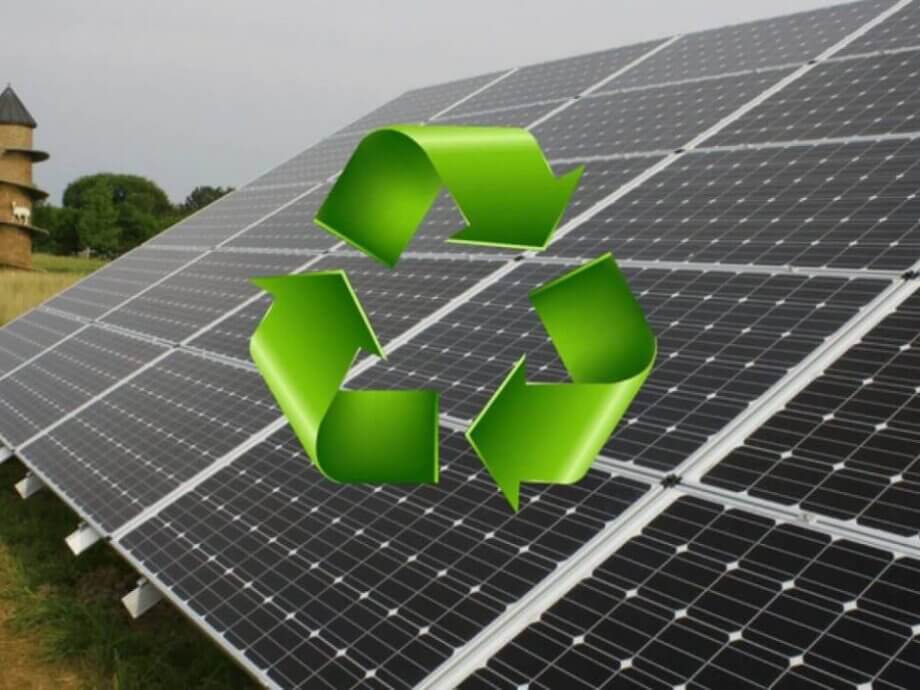Fukushima’s Solar Panel Glass Recycling Initiative: A New Chapter in Renewable Energy Sustainability
Fukushima Prefecture, once synonymous with nuclear disaster, is now at the forefront of a new environmental challenge: recycling the tempered glass from decommissioned solar panels. As Japan’s solar power boom matures, the country faces a looming wave of solar panel waste, with hundreds of thousands of tons expected to require disposal annually from the mid-2030s. Fukushima’s pioneering efforts to recycle this glass into insulation material for homes could set a precedent for the nation and beyond.
- Fukushima’s Solar Panel Glass Recycling Initiative: A New Chapter in Renewable Energy Sustainability
- Why Is Solar Panel Disposal Becoming a Crisis in Japan?
- How Does Solar Panel Glass Recycling Work?
- What Are the Main Challenges?
- Innovations and Broader Industry Efforts
- Government Policy: Toward Mandatory Solar Panel Recycling
- Environmental and Economic Implications
- Fukushima’s Role as a National Model
- What’s Next for Solar Panel Recycling in Japan?
- In Summary
Why Is Solar Panel Disposal Becoming a Crisis in Japan?
Japan’s rapid adoption of solar energy began in earnest after the 2011 Fukushima nuclear disaster. The government’s introduction of a feed-in tariff (FIT) system in 2012, which guaranteed fixed prices for renewable energy, spurred a nationwide solar installation boom. As a result, Japan’s total installed solar capacity reached 85 million kilowatts by 2022, making it the third-largest in the world.
However, solar panels have a typical lifespan of 20 to 30 years. The panels installed in the early 2010s are now approaching the end of their useful lives. The Environment Ministry estimates that between 500,000 and 800,000 tons of solar panels will need to be disposed of annually from the late 2030s—a volume that could overwhelm existing industrial waste facilities and landfill sites.
Most solar panels are currently disposed of in landfills, but this practice is unsustainable. Panels contain hazardous materials such as lead and, in some cases, cadmium, which can leach into the environment if not properly managed. The sheer volume of waste, combined with the limited number of landfill sites, has made the search for sustainable disposal and recycling solutions urgent.
How Does Solar Panel Glass Recycling Work?
Solar panels are complex, multi-layered devices. The top layer, which faces the sun, is made of high-purity tempered glass. Beneath this are layers of ethylene-vinyl acetate (EVA) resin, photovoltaic cells (usually silicon-based), more EVA, and a backing sheet. The glass is fused to the cells with EVA, making separation challenging.
In Fukushima, three companies—Takaryo Corp., Toshima Glass, and Paramount Glass Mfg. Co.—have joined forces to tackle this challenge. Their process involves:
- Crushing the protective glass from used solar panels into small pieces.
- Mixing this glass with other waste glass, such as from bottles.
- Melting the mixture in a furnace.
- Spinning the molten glass into fibers, which are then used as insulation material for homes.
This approach not only diverts glass from landfills but also creates a valuable product for the construction industry. Tests have shown that adding one ton of solar panel glass to 100 tons of insulation does not compromise the quality of the final product.
What Are the Main Challenges?
Despite its promise, solar panel glass recycling faces significant hurdles:
- Profitability: The process is more expensive than simply disposing of the glass. Adjusting the mixture ratios is time-consuming because solar panel glass contains different substances than standard bottle glass.
- Scale: Paramount Glass estimates that at least 100 tons of protective glass per month are needed for full-scale commercialization. Currently, the companies are using just one ton per month in test production.
- Transportation Costs: Moving heavy glass from solar power plants to recycling facilities adds to the expense. The Fukushima prefectural government has begun subsidizing transportation costs to support these efforts.
- Technical Complexity: Separating the glass from other panel components, especially the EVA resin and embedded metals, requires specialized equipment and processes.
Innovations and Broader Industry Efforts
Fukushima’s initiative is part of a broader movement across Japan to develop effective solar panel recycling technologies. Several companies and research organizations are working on innovative solutions:
- TAKEEI Corporation in Soma City, Fukushima, has launched a facility that uses a “PV Recycling Hammer” to crush and separate glass from panels. The plant can process about nine tons of panels daily, with plans to expand capacity. Panels that pass inspection are resold; others are dismantled for materials like aluminum and glass, which are then recycled or responsibly disposed of.
- AGC Inc. has succeeded in recycling cover glass from solar panels into float glass—a high-value product used in construction. This process conserves raw materials and reduces greenhouse gas emissions, as recycled glass requires less energy to process than virgin materials.
- Mitsubishi Chemical Group has developed a technology that uses high temperatures to turn the sealant in solar panels into gas, making it easier to recover glass, silver, copper, and aluminum. This method reduces recycling costs by 20–30% and allows for the reuse of about 99% of panel materials.
- NPC and Toshiba Environmental Solutions have created mechanical methods to separate glass from cells, such as the “hot knife” technique and steel brush grinding. These methods aim to increase the efficiency and profitability of recycling operations.
These innovations are crucial, as the value of recovered glass is relatively low—scrap glass sells for just 0.5–1 yen per kilogram. To make recycling viable, companies are seeking ways to create higher-value products or reduce processing costs.
Government Policy: Toward Mandatory Solar Panel Recycling
Recognizing the scale of the impending waste problem, the Japanese government is moving to make solar panel recycling mandatory. The Ministry of Economy, Trade and Industry and the Environment Ministry plan to introduce legislation requiring companies to recycle solar panels, with penalties for non-compliance. An expert panel is being convened to develop specific recycling methods and support measures, including financial assistance.
Currently, recycling is not mandatory, and most panels end up in landfills. The new policy aims to optimize resource use, minimize environmental impact, and align Japan with international standards. The European Union has required solar panel recycling since 2012, and similar regulations are being adopted in parts of the United States and considered in China.
The government is also promoting the development of new solar technologies, such as perovskite solar cells (PSCs), which are lighter and more versatile but have shorter lifespans. Subsidies are being considered to cover recycling costs for these next-generation panels.
Environmental and Economic Implications
Recycling solar panels offers several environmental benefits:
- Reduces landfill waste: Diverts large volumes of glass and other materials from limited landfill sites.
- Prevents pollution: Proper recycling prevents hazardous substances like lead and cadmium from leaching into soil and water.
- Conserves resources: Recovered glass, aluminum, and silicon can be reused, reducing the need for new raw materials and lowering energy consumption.
- Reduces greenhouse gas emissions: Using recycled materials in glass production cuts CO2 emissions compared to using virgin resources.
Economically, the challenge is to make recycling profitable. The low value of recovered materials and high processing costs are barriers. Government subsidies, technological innovation, and the creation of higher-value recycled products are all part of the solution.
Fukushima’s Role as a National Model
Fukushima’s leadership in solar panel recycling is significant for several reasons. The prefecture has the highest annual solar power generation output in Japan and has made a concerted effort to expand renewable energy since the 2011 nuclear disaster. Its experience in developing recycling infrastructure, fostering industry collaboration, and securing government support could serve as a model for other regions facing similar challenges.
Moreover, Fukushima’s efforts are part of a broader shift toward a circular economy in Japan’s renewable energy sector. Initiatives such as the “Soma Circular Park” and the launch of web platforms for solar panel reuse and recycling reflect a growing focus on sustainability and resource efficiency.
What’s Next for Solar Panel Recycling in Japan?
As the volume of decommissioned solar panels rises, Japan faces a critical test of its ability to manage renewable energy waste sustainably. Key steps moving forward include:
- Scaling up recycling operations to handle hundreds of thousands of tons of panels annually.
- Developing cost-effective and efficient recycling technologies.
- Implementing and enforcing mandatory recycling regulations.
- Encouraging the creation of high-value recycled products to improve profitability.
- Promoting the reuse of panels where possible, especially in regions with less stringent performance requirements.
Success will require continued collaboration between government, industry, and research institutions, as well as public support for sustainable energy practices.
In Summary
- Japan faces a looming crisis of solar panel waste, with up to 800,000 tons per year expected by the late 2030s.
- Fukushima Prefecture is pioneering efforts to recycle solar panel glass into insulation material, setting a potential model for the nation.
- Recycling is challenged by high costs, technical complexity, and the need for large-scale operations.
- Innovative technologies and government subsidies are helping to make recycling more viable.
- Mandatory recycling regulations are being developed to address environmental and resource concerns.
- Fukushima’s leadership reflects a broader shift toward a circular economy in Japan’s renewable energy sector.
- Effective solar panel recycling is essential for the long-term sustainability of Japan’s clean energy transition.












